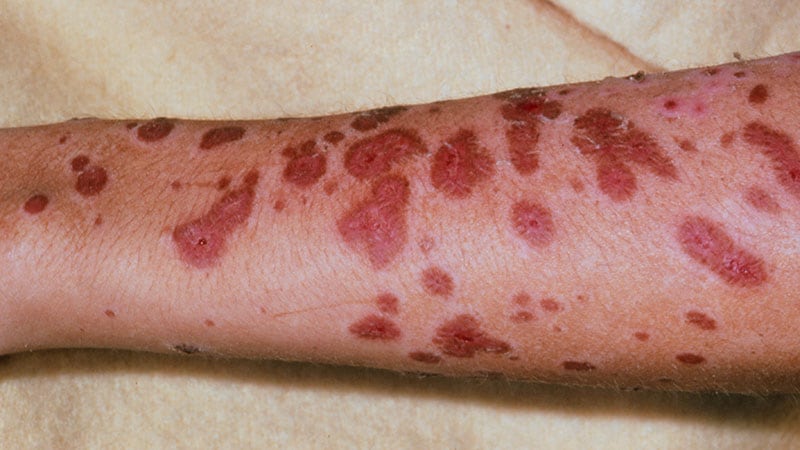Challenges in Identifying Culprit Drugs for Stevens-Johnson Syndrome/Toxic Epidermal Necrolysis
Core Concepts
Prompt identification of culprit drugs in Stevens-Johnson syndrome/toxic epidermal necrolysis is crucial for patient outcomes.
Abstract
In the absence of a formal diagnostic test for Stevens-Johnson syndrome/toxic epidermal necrolysis (SJS/TEN), clinicians often overlabel patients as allergic to drugs, leading to potential negative consequences. A retrospective cohort study at Brigham and Women's Hospital and Massachusetts General Hospital aimed to evaluate current approaches to identifying culprit drugs and improve patient outcomes. Key findings include:
Overlabeling patients as allergic to drugs can lead to suboptimal treatment.
The absence of a laboratory test makes identifying culprit drugs challenging.
Physicians rely on drug notoriety and timing of exposure to identify culprit drugs.
The ALDEN scoring system may help identify culprit drugs more accurately.
Human leukocyte antigen testing could benefit some cases.
A systematic unbiased approach is needed to ensure accurate identification of culprit drugs.
The study acknowledges limitations due to its retrospective design and evolving research in the field.
SJS/TEN: Study Addresses Issues in Identifying Culprit Drug
Stats
"Prompt identification and discontinuation of a culprit drug is critical to improving patient outcomes and preventing recurrence."
"Many patients may be labeled as allergic to multiple agents."
"Physicians appeared to mainly rely on two factors: drug notoriety and timing of exposure."
"ALDEN scoring was discordant with physician-labeled lists in 28 cases."
Quotes
"Prompt identification and discontinuation of a culprit drug is critical to improving patient outcomes and preventing recurrence."
"Many patients may be labeled as allergic to multiple agents."
"Physicians appeared to mainly rely on two factors: drug notoriety and timing of exposure."
"ALDEN scoring was discordant with physician-labeled lists in 28 cases."
Key Insights Distilled From
by Doug Brunk at www.medscape.com 06-28-2023
http://www.medscape.com/viewarticle/993806
Deeper Inquiries
How can healthcare systems address the challenge of overlabeling patients as allergic to drugs?
Healthcare systems can address the challenge of overlabeling patients as allergic to drugs by implementing systematic and unbiased approaches to identifying culprit drugs. Utilizing tools like the Algorithm for Drug Causality for Epidermal Necrolysis (ALDEN) or the RegiSCAR database can help ensure that the true culprit drug is identified while exonerating nonculprit drugs. Additionally, human leukocyte antigen (HLA) testing can be considered in cases where it may provide valuable information. By moving away from subjective assessments based on drug notoriety and incomplete timing data, healthcare providers can reduce the risk of overlabeling patients as allergic to drugs they can safely tolerate.
What are the potential implications of not accurately identifying culprit drugs in cases of Stevens-Johnson syndrome/toxic epidermal necrolysis?
The potential implications of not accurately identifying culprit drugs in cases of Stevens-Johnson syndrome/toxic epidermal necrolysis (SJS/TEN) can be severe. Failing to pinpoint the actual offending drug can lead to patients being labeled as allergic to multiple agents, which can result in receiving less effective, more toxic, or more expensive medications than necessary. In some cases, patients may even be left without appropriate treatment for their underlying condition. This can not only impact the immediate outcomes of the SJS/TEN episode but also increase the risk of recurrence and further complications. Accurate identification of culprit drugs is crucial for improving patient outcomes and preventing adverse reactions.
How can advancements in laboratory testing improve the identification of culprit drugs in cases of Stevens-Johnson syndrome/toxic epidermal necrolysis?
Advancements in laboratory testing can significantly enhance the identification of culprit drugs in cases of Stevens-Johnson syndrome/toxic epidermal necrolysis (SJS/TEN). Currently, the absence of a formal diagnostic test for SJS/TEN makes it challenging to pinpoint the exact drug responsible for the reaction. By developing specific laboratory tests or criteria standards that can accurately identify culprit drugs, healthcare providers can streamline the process of determining the cause of the reaction. Additionally, incorporating tools like the ALDEN algorithm or leveraging resources like the RegiSCAR database along with potential HLA testing can further improve the accuracy of identifying culprit drugs. These advancements can help in differentiating between true allergens and drugs that patients can safely tolerate, ultimately leading to better treatment outcomes for individuals with SJS/TEN.
0
